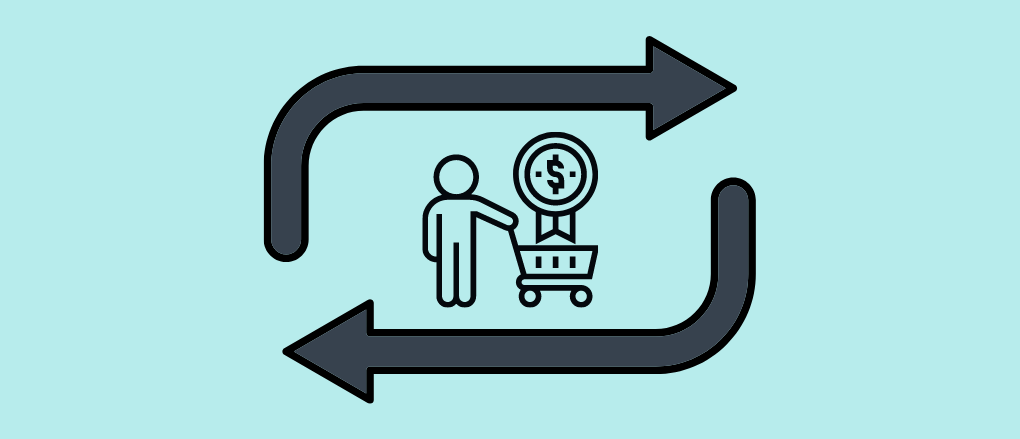Have you ever considered that your customer relationships are a lot like the personal relationships in your life?
Okay, sure, customers won’t be upset if they don’t get invited to your wedding (well, unless they’re really good customers). But what I mean is that both relationships share one thing in common: they took time and effort to build.
Customer happiness, much like the happiness you derive from personal relationships, isn’t the result of one single positive interaction.
Instead, building customer happiness takes a repeated commitment to develop meaningful relationships that last.
For the most part, your best approach is to commit to consistent investment in top-tier customer service.
Now, such levels of commitment can seem daunting. If you’re a small business, you may not have the resources to wow your customers. If you’re a large business, the sheer scale of support required can make you wince.
However, today I’m going to share a set of core principles anyone can implement that’ll put customer happiness at the heart of your business.
So, keep reading to find out how you can stick a smile on your customer’s faces and transform one-time shoppers into lifelong fans.
What is Customer Happiness?
Let’s begin with a definition of customer happiness, so we’re all on the same page:
Customer happiness is the degree to which customers experience satisfaction and loyalty after interacting with your products or support team. Customer happiness comes about when you meet or (even better) exceed your customer’s needs and expectations.
Now, as the data-driven customer service-oriented person that you are, I realize that such a loose definition might irk you. I mean, what metric can you use to measure customer happiness?
In truth, there is no industry-standard metric for measuring customer happiness. However, by combining other metrics like Net promoter score (NPS) and customer satisfaction score (CSAT) along with qualitative data from your support teams, you can get a general picture of how happy your customers are.
Put another way; customer happiness can be seen as the meta-indicator of all of your customer feedback mechanisms.
Speaking of customer satisfaction, what’s the difference between customer satisfaction and customer happiness?
Customer Happiness vs. Customer Satisfaction
Given the lack of a fixed measurement of customer happiness, it can be easy to overlook. After all, an 18% increase in CSAT scores looks much better in the quarterly report as opposed to a vague boost in customer happiness.
But while CSAT scores are a fantastic indicator of customer health – they don’t give a true insight into how happy your customers really are.
For example, a typical CSAT question asks, ‘How satisfied are you with our [customer service] today?’
The problem with this question is that it’s asking about a specific situation. Its focus is narrow.
It’s entirely possible that a customer had a poor interaction with your customer service team but is still a huge fan of your company, and the opposite is true too.
So, where customer satisfaction metrics measure the specifics, customer happiness is a measure of the entire span of your customer’s experience.
Of course, measuring customer satisfaction is valuable. However, it’s made more valuable when combined with customer happiness because it sheds light on your customer’s emotional landscape.
After all, positive customer interactions don’t directly drive loyalty. Instead, it’s the emotions that repeated positive interactions elicit that encourage customers to come back. And that’s precisely what measuring customer happiness aims to capture.
Why Does Customer Happiness Matter?
Should you care if your customers are happy with your business? I mean, surely if your products are good enough, people will keep coming back regardless, right?
Well, the primary reason you should care about customer happiness is this – According to HBR, the lifetime value of an emotionally engaged happy customer is over double that of a highly satisfied customer.
Yes, that is right, even if your customers are highly satisfied, they can still be emotionally unengaged with your brand and therefore spend less money than they might otherwise.
Seriously, happy customers are an asset whose value can’t be understated. They’re like a marketing army for your brand – they tell their colleagues, friends, and family about your business.
Plus, emotionally involved customers give you genuine feedback and help guide your product development and business direction. Because they care, they’ll tell you openly and honestly where you can improve.
Moreover, happy customers create an upwards cycle of productivity within your business. When your support teams and staff are getting positive feedback (instead of being yelled at), they’re happier in their jobs, too, and get more done.
So, in effect, happier customers spend more money, give better feedback and create a happier workforce. If that’s not something worth cultivating, then I don’t know what is!
7 Proven Ways to Boost Customer Happiness
Okay, now that you know how powerful customer happiness is, you probably want to know how to cultivate it.
There are a million and one ways to boost customer happiness; however, here are the lowest-effort but biggest bang-for-your-buck tactics that great brands have deployed over the years.
1. Dial-in Your Brand Voice & Buyer Personas
Think about the people you gravitate towards in personal relationships. Maybe you like bubbly, humorous types. Or perhaps seriousness and confidence are more your thing.
In a similar fashion, your ideal customers are naturally drawn towards a specific communication style and brand voice. And this voice isn’t limited only to your marketing efforts. Your brand voice is just as important in customer service interactions too.
Crafting a brand voice that resonates and generates happiness starts with understanding your buyer personas. For example, you wouldn’t communicate with a fifty-five-year-old woman as you would with a twenty-one-year-old male.
Remember, in order to delight your customers; you first need to know who they are and how they like to be spoken with.
If you don’t have a clear picture of who your customers are, then I’d suggest using Hubspot’s free persona generator to get you started on the right foot.
📖 Suggested Reading: Customer Service Voice: How to Communicate So Customers Will Love You
2. Make Your Customers Feel Heard
I bet that any relationship you value involves a feeling that the other person is listening to you and responding to your needs.
In the same way, getting your customers to invest in your business emotionally means that you’ll need to listen to them.
Traditionally, you could use tests like the CSAT and NPS, as discussed earlier. But there’s also a whole range of other ways that you get feedback from your customers. For Example:
- Use polls in social media
- Host virtual focus groups
- Use data from your CRM to find areas of improvement
- Send out email surveys with an incentive
- Put quick surveys on your thank you page (for great response rates)
- Create a Facebook group and encourage customers to contribute and ask questions
The point of all these tactics is to encourage customers to voice their opinions about how you can become a better business.
Remember, at the core of promoting customer happiness is understanding what your customers want and then meeting (or preferably exceeding) those needs.
Essentially, gathering first-hand customer feedback is a critical step towards becoming a business that people rave about.
3. From Here On Out, Everyone is a VIP
Imagine what your business would look like if you treated every customer as if they were your most important customer.
Without a doubt, you’d have a growing band of loyal customers who’d be delighted to give you repeat business.
See, shifting your perspective to see every shopper as a VIP ensures that customers come away from interactions feeling valued.
Seriously, just think about the last time you received stand-out service – how did that make you feel about the company you were dealing with? Pretty good, right?
So, what does it mean to treat customers like VIPs? Well, typically, it involves:
- Going above and beyond the customer’s expectations – no problem is too small or too big to solve
- You actively listen – customers aren’t just a number or statistic; you must treat their concerns as valid and meaningful.
- The experience is personal – personalized experiences resonate with us on a deeper level. Use customer names and know the context (previous orders, interactions, etc.) in which the support ticket arose.
🤫Psst…A help desk like Gorgias can help you pull all customer conversations into one place!
4. Express Heartfelt Gratitude
Gratitude has the power to move mountains. Well, not literally, but it can certainly shift emotional mountains.
Seriously, thanking your customers at every opportunity builds positive feelings while also adding a human aspect to your brand that many modern businesses lack.
Sure, most savvy brands will send thank you and welcome emails, but to, stand out you’ll need to go get creative and do more. For example, you could:
- Create unique trigger-based thank you page videos where you express gratitude to customers for shopping with for the 1st, 2nd, 3rd, etc. time
- Write hand-written thank you notes and put them in the package whenever you win a new customer like grocery delivery brand shuppa does.
- Send birthday surprises to congratulate customers on another successful circumnavigation of the sun.
- Build a loyalty program that rewards your best customers and encourages new shoppers to keep coming back.
- Include something free in your packages as a bonus to commemorate certain shopping milestones.
The list of ways to express your gratitude to customers is endless. Steal one of the above examples, or get your creative juices flowing and come up with your own.
Overall, customer appreciation requires a relatively small cost on your side. However, appreciation can pay massive dividends down the road through enhanced customer happiness and loyalty. Don’t sleep on it.
5. Become Unwaveringly Consistent
Restaurateurs have a saying that goes, ‘you’re only as good as the last meal you serve.’
And that’s an idea that’s relevant to everyone who serves customers because it takes a heck of a lot more positive experiences to extinguish the fire caused by a single negative interaction.
But how do you become more consistent in providing stellar customer service?
Well, there are a few answers, but one of the most effective ways involves a two-pronged approach:
1. Develop a cohesive customer service philosophy.
2. Hire awesome support staff
A customer service philosophy is a set of ideas that underpin your company’s highest aspirational vision for customer service. It acts as a beacon that guides your team through dealing with even the rudest of customers.
Hiring adaptable, enthusiastic, and reliable staff is easier said than done. However, the importance of great support talent can’t be underestimated when it comes to providing a consistently awesome customer experience.
6. Leverage Data to Understand What Works
If ever there was a more generic piece of customer service advice, this is surely it.
However, I’ve included using data on this list because it’s shocking how many brands don’t understand how to interpret their customer satisfaction metrics.
Seriously, knowing how shifts in metrics like your average resolution time, time to first response, NPS, and more affect your customer’s experience is incredibly important.
The old adage of ‘what gets measured, gets improved’ holds firm here. Simply by tracking various customer satisfaction metrics, you’ll be inclined to improve your weak areas and double down on what’s working.
Without measurement, you’re shooting in the dark. By tracking your customer satisfaction metrics over time, you can figure out which behaviors actually increase customer happiness and stop wasting resources on areas that don’t.
7. Own Mistakes And Don’t Be Too Proud to Compromise
Full disclosure; this is relationship advice from my great aunt. She was married to my great uncle for a mind-blowing sixty-four years.
When she was interviewed by the local newspaper to find out the secret to a lasting relationship, she said, ‘own your mistakes and always be prepared to compromise.’
Well, her advice holds just as true in customer relationships too. See, the thing is that mistakes are bound to happen. They’re an unavoidable part of life.
But what sets you apart from other companies is how you react to such mistakes. The research bears this out, too – customer’s genuinely don’t mind when things go wrong; they only care about how quickly you can put things right.
For example, if a customer gets sent the wrong order or a refund fails to process, then don’t put the onus on the customer to fix things. Own your mistakes and take action to mend them as soon as possible.
Where compromise is necessary, don’t be afraid to meet customers halfway. For example, if a customer has a genuine reason as to why they couldn’t comply with the return policy, have some leeway to come to a compromise that doesn’t sour the relationship.
Remember, every time a customer contacts you with a problem; it’s not just a support ticket to be dealt with. It’s an opportunity to flip a negative experience into a positive one.
Do that enough times, and you’ll soon see a welcome boost in customer happiness.
Go Forth & Spread Customer Happiness
Pretty much everyone knows that happier customers make for a happier bottom line.
Despite this, lots of businesses don’t make customer happiness a priority.
Hopefully, the advice we’ve shared in this post inspires you to take action and build a business that better serves your customers.
When you embrace customer happiness as a core tenet of your business, you create fertile ground for astronomical growth. So, go forth and slap a smile on your customer’s faces!




